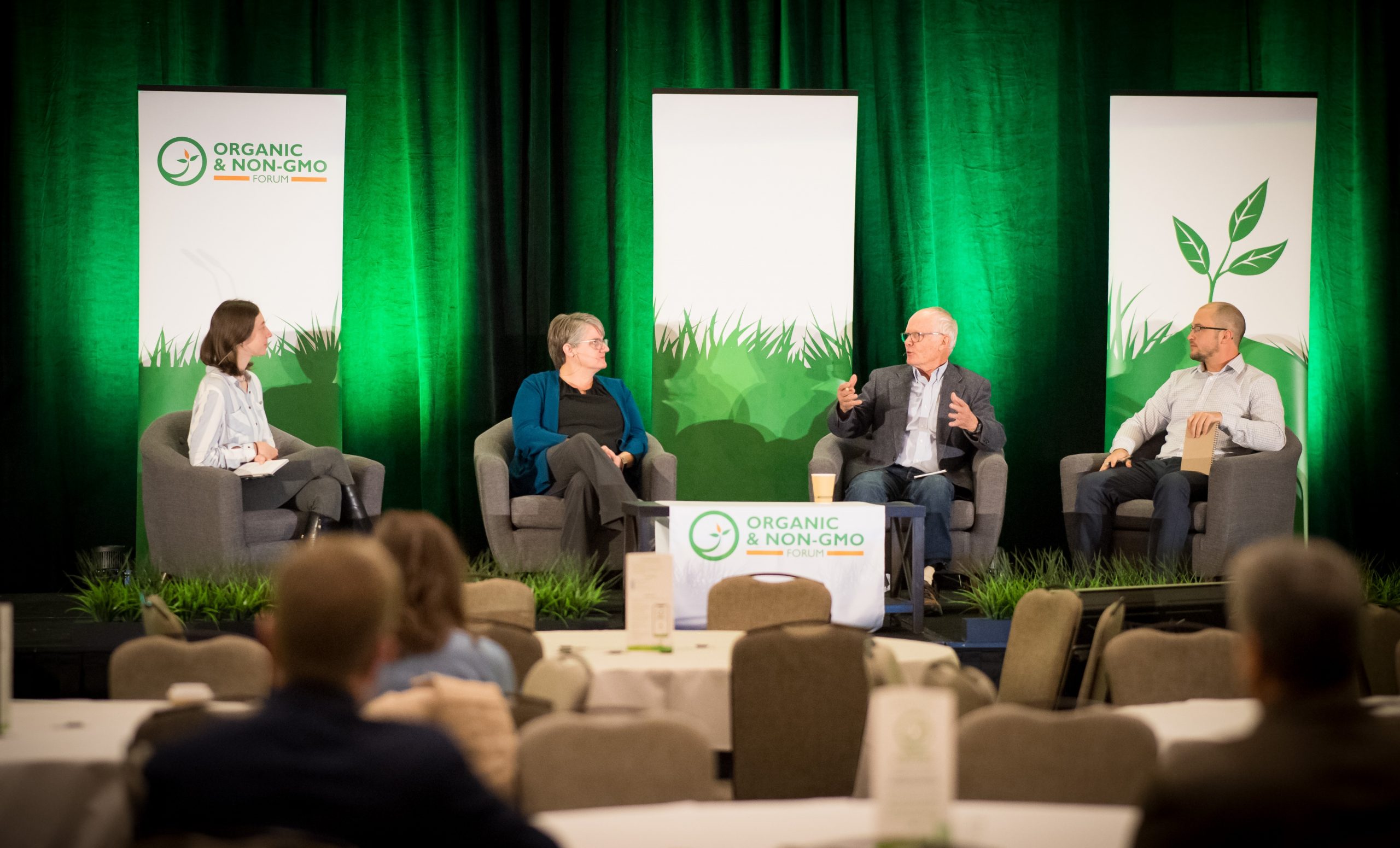It’s an exciting time to be an organic farmer. That was a key takeaway from a panel of organic farmers at the Organic & Non-GMO Forum held last October in Minneapolis. Topics covered included crop rotations, organic transition challenges, weed control, and marketing.
The panel included three Minnesota-based organic farmers: Carolyn Olsen, Olson Organics; Carmen Fernholz, A-Frame Farm; and Peter Schwagerl, Prairie Point Farm. Lauren Langworthy, executive director of Midwest Organic and Sustainable Education Services (MOSES), moderated the session.
Excited about Kernza
Olson, who has farmed for 31 years, said she has loved “every minute of farming.” Ferhnolz has been farming for 44 years, while Schwagerl is the newcomer with seven years of organic experience.
Langworthy asked the farmers what their ideal crop rotation is. Olsen said she grows soybeans, a small grain, and alfalfa as part of a three-year rotation, which will also sometimes include corn. She also grows organic seed for Albert Lea Seed House. “That dictates what we grow,” she said.
Fernholz said introducing alfalfa into his rotation changed his farm. “It’s a soil building and weed management tool, which is very important in an organic system where weeds are a challenge.”
Fernholz is also growing Kernza perennial wheatgrass, which companies like General Mills and Patagonia are using to produce foods and beverages.
“I’m really excited about Kernza. That will be my favorite crop in the future. It can be a totally viable crop to introduce into a rotation,” he said.
Schwagerl said he has a four-year rotation with corn followed by soybeans, field peas and a small grain. He also plans to grow a perennial crop like Kernza.
“More resources are available now”
Transitioning to organic was also a key topic. In a discussion about barriers to transitioning to organic, Schwagerl said there is a social stigma associated with organic production.
“You’re out in left field with no support group around you. You have to find a completely new network of suppliers.”
But Fernholz said transitioning today is not as challenging as it was 10 years ago. “There are more resources available now and the yield hit is not as bad.”
Langworthy agreed: “There is more support for organic farmers and support structures such as Pipeline Foods, Albert Lea Seed, MOSES, and others.”
One of the biggest challenges facing organic farms is managing weeds.
“Farmers need to ask: what kind of mechanical equipment do I need?” Fernholz said. “I try to tell organic farmers how to work with a cultivator or a rotary hoe.”
“New weed control equipment is becoming available,” Olsen said. “Organic farmers are the most out of the box thinkers.”
Need to protect organic markets
In marketing organic crops, relationships matter, Langworthy said. “We like to work with our buyers.”
Schwagerl said he signs contracts in January or February for organic acres to lock in prices. “Knowing we have a set price point is good to avoid volatility and provides economic security,” he said.
Looking to the future Fernholz said: “We as organic producers have to be fully engaged in protecting the markets. That will determine where organics goes in the future.”
Langworthy said organic farmers are “building a new paradigm in farming.”
Olsen is optimistic about the future of her farm and organic agriculture. “I see room for growth to reduce the need for imports. We want to improve the farm every year, making it better and leaving it better. That’s what sustainability means to us. It’s an exciting time to bring new farmers in.”
Schwagerl is optimistic but practical. “It’s an exciting time to be an organic farmer, but we have to be careful to not get ahead of ourselves.”









